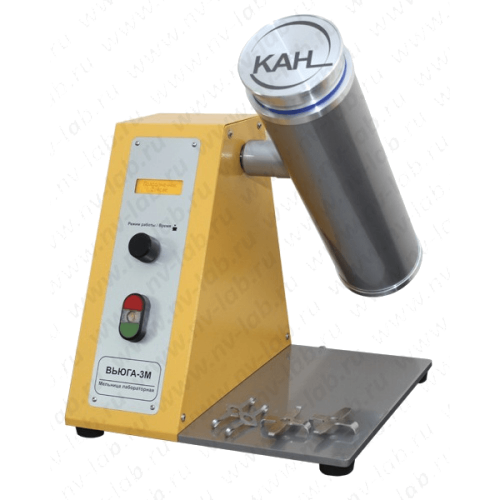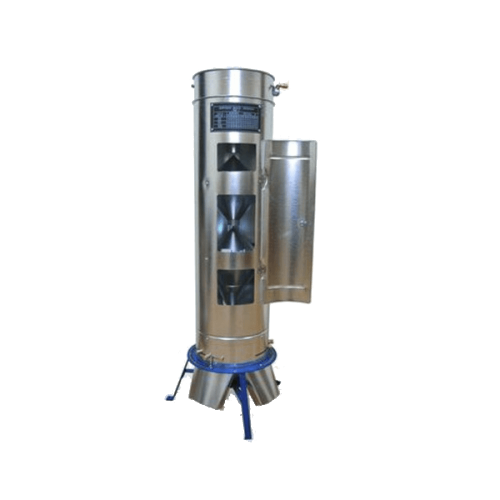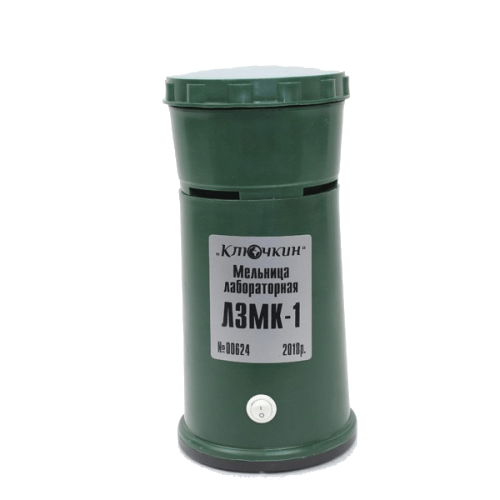Description
Laboratory mill LMT-2
LMT-2 is intended for grinding laboratory samples of grain of agricultural crops and products of their processing in order to prepare for the subsequent determination of grain quality indicators.
LMT-2 is used in PTL grain-receiving, flour-grinding and grain processing enterprises, laboratories of the State Chemical Institute, in the agricultural system, breeding and research organizations, independent laboratories and other organizations involved in assessing the quality of agricultural crops and products of their processing.
The mill is used in the preparation of samples to determine the quantity and quality of gluten, “falling number”, protein content, as well as other indicators, the determination of which requires grinding the product to a given size.
The mill provides grinding of a sample of grain weighing from 10 g to 100 g with a given stable particle size. Sieve control of the crushed product is not required (sieve N 067 descent no more than 1%, sieve N 38 passage no less than 60%). The mill is equipped with replaceable calibrated sieves with a diameter of 0.8 and 1.0 mm.
: Mill LMT-2consists of a body on which a plate with a cyclone is mounted. A cover is mounted on the plate, on which a receiving funnel is installed, as well as a valve. The plate cavity contains a shell made in the form of a ring with a notch along the inner side and a sieve. An impeller is located in the cavity of the plate. An electric motor is installed inside the housing on a slide, driving the impeller through a V-belt drive. The initial product comes from a receiving funnel, is picked up by a stream and through a groove with a hole in a cover gets to a cavity of a plate with an impeller. Under the action of the centrifugal force applied by the impeller, the product is thrown onto the shell, acquiring a circular motion. While moving along the surface of the shell with a notch, the product is crushed and its particles, together with air, are forced into the cyclone through a sieve. After separation from the product, Air is displaced through the cavity of the cover into the cavity of the plate, where it passes through filters for cleaning and is thrown out. The crushed and separated from the air product enters the receiving container to collect the crushed product.
Benefits of the laboratory mill LMT-2:
· The presence of an adjustable automatic dosing of the feed product allows you to grind the product of high humidity.
· Availability of self-cleaning devices for the dosing system, grinding chamber and product pipeline excludes mixing of the ground sample with the remains of the previous sample.
· The drive belt is multi-layered, reinforced with five layers of synthetic polyamide yarns, practically does not stretch and does not require regular tension.
· The special shape of the impeller prevents it from jamming when grinding large grains (peas, corn, soybeans).
· The use of a special filter fabric provides effective purification of the used air from dust and excludes its release into the working space of the laboratory.
Specifications:
| Grain supply | automatic adjustable self-cleaning |
| The mass of the ground product, g | 10-100 |
| Grinding time for a sample weighing 50 g, s | 20-40 |
| Permissible number of grindings per hour | thirty |
| The size of the crushed product, no more than, mm | 14 |
| Volume of the loading bunker, ml | 280 |
| Receiving hopper volume, ml | 250 |
| The frequency of rotation of the grinding body, rpm | 10200 |
| Engine power, W | 550 |
| Power supply (single-phase network), V/Hz | 220/50 |
| Noise level, dB | 73-75 |
| Set of sieves, mm/mm | 0.8; 1.0 |
| Overall dimensions (without grain bunker), mm | 342x178x408 |
| Weight, kg | 17.5 |





